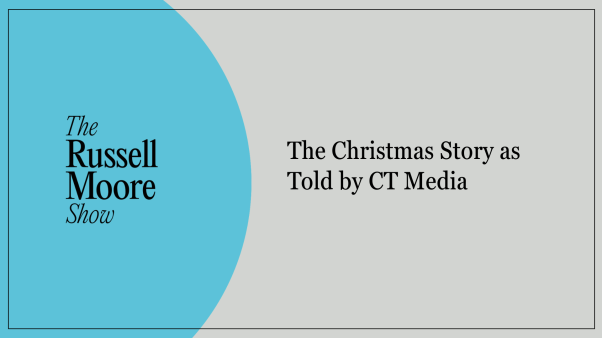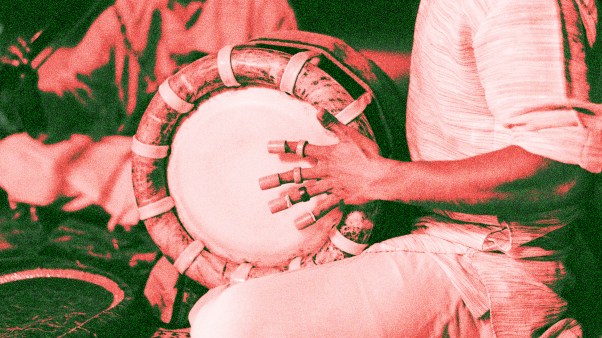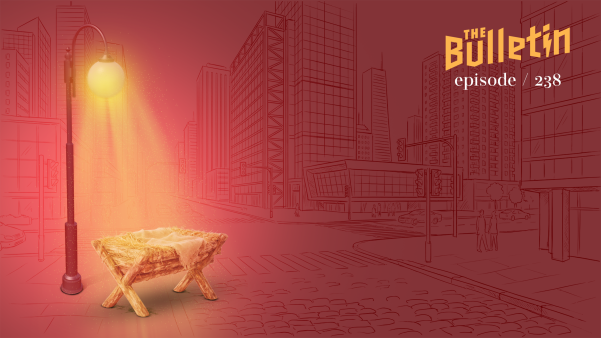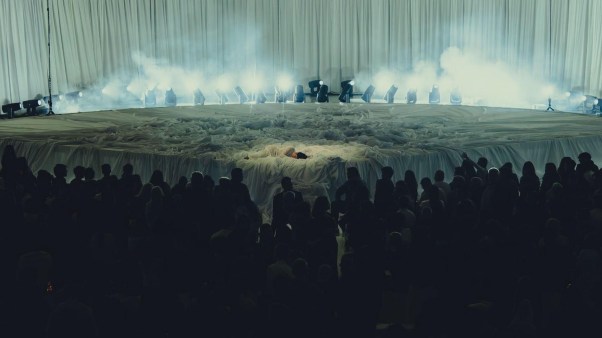 Although television has been a major factor in American life for nearly a generation, it has yet to find a creative niche. Except in times of crisis, its great potential for immediacy goes largely untapped. Television as a positive force is still so insignificant that the sudden demise of the medium might be more of a joy than a calamity.From the religious perspective, the most lamentable thing is that the churches have hardly even begun to use television. What was first seen as a new means for fulfilling the Great Commission is still looked upon wistfully by evangelistically minded Christians. But they are attempting only a smattering of productions—some of them remarkably good—and virtually all of these appear early Sunday, when the unchurched are asleep. An exception are semi-annual Billy Graham crusades in “prime time.”The predicament was aptly underscored a few days ago by a Hollywood scriptwriter at a conference in Montreal. John Bloch, who helps create such shows as “The Man from U.N.C.L.E.” and “Run for Your Life,” told the conferees that “all the money and energy being channeled into half-hour programming on Sunday morning is a waste.” He urged church communicators to try to penetrate prime evening time.Columnist Jack Gould of the New York Times agreed in principle but questioned the practicality of Bloch’s appeal. “As he knows better than any viewer,” Gould said, “the output of Hollywood is rigorously formalized and dependent on materialistic considerations above all else.” Gould didn’t have any answers, either, and was able only to look askance at “the deluge of evangelists who spend huge sums on radio every weekend to hear the sound of their own voices and come up with soothing maxims that faith in God is the answer to miserable housing, unemployment and the absence of minimum human dignity.”Unfortunately, Gould’s underlying presupposition that church involvement in social problems will win better TV time falls apart when one realizes that the National Council of Churches’ perennial preoccupation with non-ecclesiastical matters has won only slight massmedia attention. Gould scores much better with another thesis “What religion on TV requires is hard-hitting and searching reportage.”Interestingly, one of the new TV season’s prime-time shows does inject a religious element—as the gimmick for a comedy routine. “The Flying Nun” on ABC features Sally Field as the ninety-pound novice whose headgear enables her to become airborne.About the only other TV program worth talking about so far this fall was the four-hour Africa special ABC pioneered. The most glaring shortcoming in an otherwise commendable program was the omission of any mention of the role Christian missionaries have had in the development of Africa. Here was a perfect opportunity to include the religious element, but the producers chose to ignore it completely. It was as if they did not know that the missionaries were helping the African back when no one else cared.To mobilize the church to exert pressure for better programming, the Methodist Television, Radio and Film Commission has designated October as “Television Valuation Month” and is issuing 1,600,000 copies of “A Guide to Action.” The material includes perforated cards on which viewers are asked to comment on TV programs; the cards are then to be sent to local stations.Commission chief Harry Spencer realizes full well, however, that programming changes cannot be effected without changes in viewing habits. Said Spencer: “We are telling our church people that if they want changes in television programs, they will have to do more than voice their opinions—they will have to change themselves.”‘Heart Of America’ RespondsEvangelist Billy Graham preached with traditional simplicity to the largest audiences ever to assemble for a religious event in Kansas City during the ten-day “Heart of America” crusade, September 8–17.The crowds that gathered at Municipal Stadium also challenged a previous attendance record set when the Kansas City Chiefs attracted 43,835 persons for their 1966 football opener. More than 42,000 attended the first Sunday service of the crusade.After the evangelist’s zealous messages delivered from a platform in short center field, one person in every forty-two stepped onto the infield skin to indicate a spiritual need.Among inquirers were several chiefs of police attending their national convention in Kansas City and a timid ten-year-old carrying an airline travel bag well stuffed with whatever little girls put in them.Although Graham had vowed to avoid political issues, he frequently acknowledged the need for federal action in racial and poverty problems.“I’ve been in a place in New York City where two families with nine children between them live in the same room, with only a sheet to divide the families. And the closest bathroom was three floors away. Things like this should not happen in America,” he said.But the problems of race, poverty, agitation, and subversion are only symptoms of the greatest problem, he said—“man pitting his will against God’s.”The evangelist interpreted the statements made by Bishop James Pike on Johnny Carson’s TV show while the crusade was in progress as a disavowal of the Bible. He paralleled what Pike said to the work of the Devil who created doubts in Adam and Eve about the Word of God. “Bishop Pike’s ideas are not new,” Graham asserted. “They began in the Garden of Eden.”He warned, “This crusade is being held at a time when the world is caught up in a psychopathic madness that could mean ultimate racial suicide.”Seven hundred seminary students and young ministers representing forty denominations attended a week-long school of evangelism conducted by Graham associates. An additional four hundred observers were present. The first school, started by four seminary students, was held during the 1962 Greater Chicago crusade, and others have followed in several cities.Among dignitaries to greet Graham publicly was Senator Frank Carlson, (Republican-Kansas), a longtime friend of his. Carlson recalled that Graham had been a “source of strength to three presidents, Eisenhower, Kennedy, and Johnson” through the Presidential Prayer Breakfast.During the crusade former President Harry S. Truman, who lives in nearby Independence, Missouri, invited Graham to his home. It was the first meeting between the two in fifteen years. Truman, now 83, had entertained the evangelist at the White House in 1952 after his Boston crusade.During the 1952 visit, Graham asked the President whether he could pray with him. Truman agreed, “seeing how it couldn’t do any harm.” Later, on the White House lawn, Graham discussed the conference and posed kneeling for photographers. Truman was irked.During the cordial twenty-minute visit September 13, Graham said to Truman that he would go down in history as “a great and decisive president.”Minor controversies eddied about the crusade. One to which Graham alluded as the number of seekers increased concerned the grass, which both the Chiefs and the baseball Athletics hope to use yet this fall.Prior to the crusade, John Antonello, Municipal Stadium manager, had lamented: “While the people are standing around out there waiting to get saved they have a tendency to kill the grass.”ELDEN RAWLINGSGraham At The ‘Ex’A Sunday afternoon rally with evangelist Billy Graham drew 40,000 into the grandstands of the 1967 Canadian National Exhibition in Toronto. The crowd was said to have been the largest ever to attend a single event in the eighty-nine-year history of the “Ex.”Charles Pitts, president of Pitts Construction Company, told the crowd of his decision for Christ during a similar Graham rally in the exhibition grounds in 1955. George Beverly Shea sang the beloved “How Great Thou Art,” which was first used in the Toronto crusade twelve years ago.Methodist EvangelismA special committee on evangelism has been established by the World Methodist Council. The six-man group was created by the WMC Executive Committee on a motion of Bishop F. Gerald Ensley of Columbus, Ohio, who was also made committee chairman. Ensley pleaded with fellow churchmen to give evangelism a greater role.Gearing For ActionLast fall’s World Congress on Evangelism stimulated demands for similar meetings on a regional scale. In Australia, these came to fruition August 29-September 1 in the Victorian Congress on Evangelism in Melbourne. The meeting drew churchmen from all over the state of Victoria (see story below). Similar regional congresses are planned for North America, Asia, and West Africa.Latin America Mission has called for a consultation of evangelists and theologians this week and plans to publish the papers and findings. The two-day meeting is being sponsored by LAM’s new Office of Worldwide Evangelism-in-Depth. Director Ruben Lores says evangelism-in-depth is a theological revolution because it relates clergy and laity in new ways, strives for intensive involvement rather than impact alone, and finds new evangelistic significance in the unity of believers.The Victorian congress, inspired by the Victorian delegation to the Berlin congress, was sponsored jointly by the Evangelical Alliance and Ridley College. It was held at Ridley and the adjoining College of Pharmacy.Wide denominational representation brought together likeminded men who in the normal course of events rarely meet. The congress was an impressive display of evangelical strength.The theme emphasized continually throughout the meetings was the responsibility of all Christians to engage in evangelism. This is not something to be left to the professionals; the obligation rests on every Christian.The Cross received a continuing emphasis. Without the Cross, Christianity would be just like any other organization. The Cross gives the Church its reason for existence and its dynamic for service.A number of speakers stressed the universal note. The Church does not confine its efforts to some limited section, such as the people near at hand or the people far away. Both must be evangelized. And the Church is concerned not with some “religious” part of life but with the whole of life. Several speakers, though they did not espouse a merely social gospel, stressed the importance of social service as the outworking of the evangelist’s deep concern for the whole of man.The congress took a separate theme each day and ran it through the Bible study, the position paper, the discussion sessions in the afternoon workshops, and the evening public meeting.The Victorian congress shook many. “My whole future ministry will be different,” said an Anglican priest. “The congress has shown me the importance of evangelism and something of the way I can evangelize.” “I’ve never before realized that without the Cross Christianity is nothing,” said a Church of Christ pastor.LEON MORRISWee-Hours CrusadeAn eight-week evangelistic campaign netted more than 2,600 professions of faith in Indonesia, according to European Baptist Federation.The federation said the figure included 1,407 converts in Central Java, 831 in East Java, 423 in West Java, and 20 on the island of Sumatra.During the campaign, it was reported, a pastor and an evangelist arrived after midnight at a village where they had been asked to preach. Their host roused the villagers, and a service was begun at 1 A.M. Fifteen persons were reported “enlisted as Christians.”
Although television has been a major factor in American life for nearly a generation, it has yet to find a creative niche. Except in times of crisis, its great potential for immediacy goes largely untapped. Television as a positive force is still so insignificant that the sudden demise of the medium might be more of a joy than a calamity.From the religious perspective, the most lamentable thing is that the churches have hardly even begun to use television. What was first seen as a new means for fulfilling the Great Commission is still looked upon wistfully by evangelistically minded Christians. But they are attempting only a smattering of productions—some of them remarkably good—and virtually all of these appear early Sunday, when the unchurched are asleep. An exception are semi-annual Billy Graham crusades in “prime time.”The predicament was aptly underscored a few days ago by a Hollywood scriptwriter at a conference in Montreal. John Bloch, who helps create such shows as “The Man from U.N.C.L.E.” and “Run for Your Life,” told the conferees that “all the money and energy being channeled into half-hour programming on Sunday morning is a waste.” He urged church communicators to try to penetrate prime evening time.Columnist Jack Gould of the New York Times agreed in principle but questioned the practicality of Bloch’s appeal. “As he knows better than any viewer,” Gould said, “the output of Hollywood is rigorously formalized and dependent on materialistic considerations above all else.” Gould didn’t have any answers, either, and was able only to look askance at “the deluge of evangelists who spend huge sums on radio every weekend to hear the sound of their own voices and come up with soothing maxims that faith in God is the answer to miserable housing, unemployment and the absence of minimum human dignity.”Unfortunately, Gould’s underlying presupposition that church involvement in social problems will win better TV time falls apart when one realizes that the National Council of Churches’ perennial preoccupation with non-ecclesiastical matters has won only slight massmedia attention. Gould scores much better with another thesis “What religion on TV requires is hard-hitting and searching reportage.”Interestingly, one of the new TV season’s prime-time shows does inject a religious element—as the gimmick for a comedy routine. “The Flying Nun” on ABC features Sally Field as the ninety-pound novice whose headgear enables her to become airborne.About the only other TV program worth talking about so far this fall was the four-hour Africa special ABC pioneered. The most glaring shortcoming in an otherwise commendable program was the omission of any mention of the role Christian missionaries have had in the development of Africa. Here was a perfect opportunity to include the religious element, but the producers chose to ignore it completely. It was as if they did not know that the missionaries were helping the African back when no one else cared.To mobilize the church to exert pressure for better programming, the Methodist Television, Radio and Film Commission has designated October as “Television Valuation Month” and is issuing 1,600,000 copies of “A Guide to Action.” The material includes perforated cards on which viewers are asked to comment on TV programs; the cards are then to be sent to local stations.Commission chief Harry Spencer realizes full well, however, that programming changes cannot be effected without changes in viewing habits. Said Spencer: “We are telling our church people that if they want changes in television programs, they will have to do more than voice their opinions—they will have to change themselves.”‘Heart Of America’ RespondsEvangelist Billy Graham preached with traditional simplicity to the largest audiences ever to assemble for a religious event in Kansas City during the ten-day “Heart of America” crusade, September 8–17.The crowds that gathered at Municipal Stadium also challenged a previous attendance record set when the Kansas City Chiefs attracted 43,835 persons for their 1966 football opener. More than 42,000 attended the first Sunday service of the crusade.After the evangelist’s zealous messages delivered from a platform in short center field, one person in every forty-two stepped onto the infield skin to indicate a spiritual need.Among inquirers were several chiefs of police attending their national convention in Kansas City and a timid ten-year-old carrying an airline travel bag well stuffed with whatever little girls put in them.Although Graham had vowed to avoid political issues, he frequently acknowledged the need for federal action in racial and poverty problems.“I’ve been in a place in New York City where two families with nine children between them live in the same room, with only a sheet to divide the families. And the closest bathroom was three floors away. Things like this should not happen in America,” he said.But the problems of race, poverty, agitation, and subversion are only symptoms of the greatest problem, he said—“man pitting his will against God’s.”The evangelist interpreted the statements made by Bishop James Pike on Johnny Carson’s TV show while the crusade was in progress as a disavowal of the Bible. He paralleled what Pike said to the work of the Devil who created doubts in Adam and Eve about the Word of God. “Bishop Pike’s ideas are not new,” Graham asserted. “They began in the Garden of Eden.”He warned, “This crusade is being held at a time when the world is caught up in a psychopathic madness that could mean ultimate racial suicide.”Seven hundred seminary students and young ministers representing forty denominations attended a week-long school of evangelism conducted by Graham associates. An additional four hundred observers were present. The first school, started by four seminary students, was held during the 1962 Greater Chicago crusade, and others have followed in several cities.Among dignitaries to greet Graham publicly was Senator Frank Carlson, (Republican-Kansas), a longtime friend of his. Carlson recalled that Graham had been a “source of strength to three presidents, Eisenhower, Kennedy, and Johnson” through the Presidential Prayer Breakfast.During the crusade former President Harry S. Truman, who lives in nearby Independence, Missouri, invited Graham to his home. It was the first meeting between the two in fifteen years. Truman, now 83, had entertained the evangelist at the White House in 1952 after his Boston crusade.During the 1952 visit, Graham asked the President whether he could pray with him. Truman agreed, “seeing how it couldn’t do any harm.” Later, on the White House lawn, Graham discussed the conference and posed kneeling for photographers. Truman was irked.During the cordial twenty-minute visit September 13, Graham said to Truman that he would go down in history as “a great and decisive president.”Minor controversies eddied about the crusade. One to which Graham alluded as the number of seekers increased concerned the grass, which both the Chiefs and the baseball Athletics hope to use yet this fall.Prior to the crusade, John Antonello, Municipal Stadium manager, had lamented: “While the people are standing around out there waiting to get saved they have a tendency to kill the grass.”ELDEN RAWLINGSGraham At The ‘Ex’A Sunday afternoon rally with evangelist Billy Graham drew 40,000 into the grandstands of the 1967 Canadian National Exhibition in Toronto. The crowd was said to have been the largest ever to attend a single event in the eighty-nine-year history of the “Ex.”Charles Pitts, president of Pitts Construction Company, told the crowd of his decision for Christ during a similar Graham rally in the exhibition grounds in 1955. George Beverly Shea sang the beloved “How Great Thou Art,” which was first used in the Toronto crusade twelve years ago.Methodist EvangelismA special committee on evangelism has been established by the World Methodist Council. The six-man group was created by the WMC Executive Committee on a motion of Bishop F. Gerald Ensley of Columbus, Ohio, who was also made committee chairman. Ensley pleaded with fellow churchmen to give evangelism a greater role.Gearing For ActionLast fall’s World Congress on Evangelism stimulated demands for similar meetings on a regional scale. In Australia, these came to fruition August 29-September 1 in the Victorian Congress on Evangelism in Melbourne. The meeting drew churchmen from all over the state of Victoria (see story below). Similar regional congresses are planned for North America, Asia, and West Africa.Latin America Mission has called for a consultation of evangelists and theologians this week and plans to publish the papers and findings. The two-day meeting is being sponsored by LAM’s new Office of Worldwide Evangelism-in-Depth. Director Ruben Lores says evangelism-in-depth is a theological revolution because it relates clergy and laity in new ways, strives for intensive involvement rather than impact alone, and finds new evangelistic significance in the unity of believers.The Victorian congress, inspired by the Victorian delegation to the Berlin congress, was sponsored jointly by the Evangelical Alliance and Ridley College. It was held at Ridley and the adjoining College of Pharmacy.Wide denominational representation brought together likeminded men who in the normal course of events rarely meet. The congress was an impressive display of evangelical strength.The theme emphasized continually throughout the meetings was the responsibility of all Christians to engage in evangelism. This is not something to be left to the professionals; the obligation rests on every Christian.The Cross received a continuing emphasis. Without the Cross, Christianity would be just like any other organization. The Cross gives the Church its reason for existence and its dynamic for service.A number of speakers stressed the universal note. The Church does not confine its efforts to some limited section, such as the people near at hand or the people far away. Both must be evangelized. And the Church is concerned not with some “religious” part of life but with the whole of life. Several speakers, though they did not espouse a merely social gospel, stressed the importance of social service as the outworking of the evangelist’s deep concern for the whole of man.The congress took a separate theme each day and ran it through the Bible study, the position paper, the discussion sessions in the afternoon workshops, and the evening public meeting.The Victorian congress shook many. “My whole future ministry will be different,” said an Anglican priest. “The congress has shown me the importance of evangelism and something of the way I can evangelize.” “I’ve never before realized that without the Cross Christianity is nothing,” said a Church of Christ pastor.LEON MORRISWee-Hours CrusadeAn eight-week evangelistic campaign netted more than 2,600 professions of faith in Indonesia, according to European Baptist Federation.The federation said the figure included 1,407 converts in Central Java, 831 in East Java, 423 in West Java, and 20 on the island of Sumatra.During the campaign, it was reported, a pastor and an evangelist arrived after midnight at a village where they had been asked to preach. Their host roused the villagers, and a service was begun at 1 A.M. Fifteen persons were reported “enlisted as Christians.”Why Do You Read So Slowly?
A noted publisher in Chicago reports there is a simple technique of rapid reading which should enable you to double your reading speed and yet retain much more. Most people do not realize how much they could increase their pleasure and ability in their personal and professional life by reading faster and more accurately.According to this publisher, anyone, regardless of his present reading skill, can use this simple technique to improve his reading skill to a remarkable degree. Whether reading literature, business material, technical data, it becomes possible to read sentences at a glance and entire pages in seconds with this method.To acquaint the readers of this publication with the easy-to-follow rules for developing rapid reading skill, the company has printed full details of its interesting self-training method in a new booklet, “How to Read Faster and Retain More” mailed free to anyone who requests it. No obligation. Send your name, address, and zip code to: Reading, 835 Diversey Parkway, Dept. 508019, Chicago, Ill. 60614. A postcard will do.
Mother Teresa's just one miracle away from sainthood. No, that's not hyperbole—just part of the fast-track canonization process that Pope John Paul II is pushing through the Vatican. Last Sunday crowds flooded St. Peter's Square in Rome to witness the pope's beatification of Mother Teresa, who died in 1997. Since most candidates are not even up for consideration until five years after their death, John Paul II is wasting no time.
But this is not so surprising—if you consider John Paul II's record over the past 25 years. According to the Vatican's official website, the current pope has presided over the canonization of a whopping 476 saints, many of whom are non-European. All other popes in the twentieth century canonized a total of 98 saints.
What drives this powerhouse saint-maker? And what does it mean to canonize saints anyway?
The Method Behind the Madness
From the earliest days of the church, Christians have given martyrs a prominent place in the church's memory. (In the Roman Catholic church, dying for one's faith is the single act that guarantees a candidate's sainthood.) After Constantine, the definition of a saint expanded to include ascetic monks exemplifying holiness and prominent evangelists or scholars zealous in the defense of the faith. Soon the numbers of feasts memorializing saints multiplied exponentially, and in 1234, the Catholic hierarchy set in place a formal procedure for reviewing candidates' credentials.
That procedure—and the authority to make saints—hardened with the challenge of Martin Luther and other Reformers. From then until 1983, canonization involved a long, complex process.
It began with an information-gathering stage, moved on to the local bishop's judgment on the person's orthodoxy, then the official application to Rome, then judicial proceedings as bishops debated the candidate's reputation. Following this, the pope authorized an examination of the corpse to see if the body had not decayed—signs of preservation usually worked in the candidate's favor. Finally, eyewitnesses had to prove the candidate had performed two miracles—the preeminent sign of "divine favor" that marked these Christians as extraordinary.
John Paul II changed this process dramatically. First, he put the responsibility for gathering evidence into the sole hands of the local bishop. More importantly, he abolished the entire legal system that had grown up around the canonization process and in its place made critical biographies his primary method for determining sainthood. The news shocked the Catholic hierarchy—lawyers lost their jobs and ecclesiastical historians gained new status.
International Pope
The shift in strategy couldn't have been more sweeping. Not only did John Paul II streamline the process significantly, he acted on his famed international focus by frequently going abroad for candidates. In 1984, for example, he canonized 103 Korean martyrs in Seoul who died under state persecution. Four years later, he recognized 116 Vietnamese martyrs. In 2000, he canonized 120 Chinese martyrs, a move that prompted strong protest from the Chinese government.
John Paul II also canonized Catholics whose stories continue to evoke powerful emotions in the West. Edith Stein, a convert from Judaism to Christianity, died a victim of Nazi Germany in 1942. "She is a witness to God's presence in a world where God is absent," wrote a professor who knew her intimately. The pope agreed and honored this "daughter of Israel" with sainthood in 1998.
But this pope has made some highly controversial decisions too. Critics contend last year's canonization of Mexico's legendary Juan Diego simply panders to the huge bloc of Latin American Catholics wanting their own indigenous saint—and is short on documentary evidence, besides. The incident calls into question the ease with which the pope has done away with legalities meant to safeguard against bogus saints.
Why the streamlined process and the rush of new saints?
The pope's aim through all of this has been to shift attention away from Catholic bureaucracy and toward pastoral care, says biographer George Weigel. This is the same motive behind the extensive international traveling that has made John Paul II one of the most recognized personalities worldwide. His huge popularity with Catholics suggest the people approve.
Protestant Saints?
Admittedly, many Protestants don't see the point of saint-making. After all, the Reformation was in part a rejection of the cultic veneration of saints that had grown up in medieval Europe. But if they are honest, Protestants will recognize they have "saints" too.
Take, for example, John Foxe's Book of Martyrs, which details the stories not only of British and French Protestants suffering under Catholic persecution, but also of America's first missionaries. Or think of the modern-day apologists accorded near-legendary status by appreciative Protestants—some students at Wheaton College jokingly refer to C. S. Lewis as the college's patron saint. Biographies abound of Christian leaders revered by Protestants as much as Catholics—indeed, Christian History's mission has always been, in part, to bring these stories before a broader audience.
The best argument for special recognition—if not canonization—of such "heroes of the faith" may come from John Paul II himself. In his speech beatifying Mother Teresa, he entreated his listeners to model their lives on this woman who took seriously Jesus' command to store up treasures not on earth but in heaven:
"In her, we perceive the urgency to put oneself in a state of service, especially for the poorest and most forgotten, the last of the last."
A chief reason the church makes saints, in other words, is to inspire everyone else to live like them.
Steven Gertz is editorial coordinator of Christian History.
Copyright © 2003 Christianity Today. Click for reprint information.








